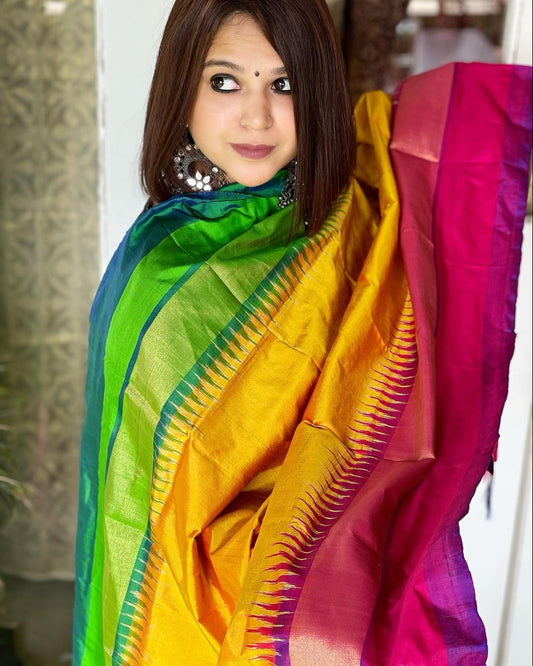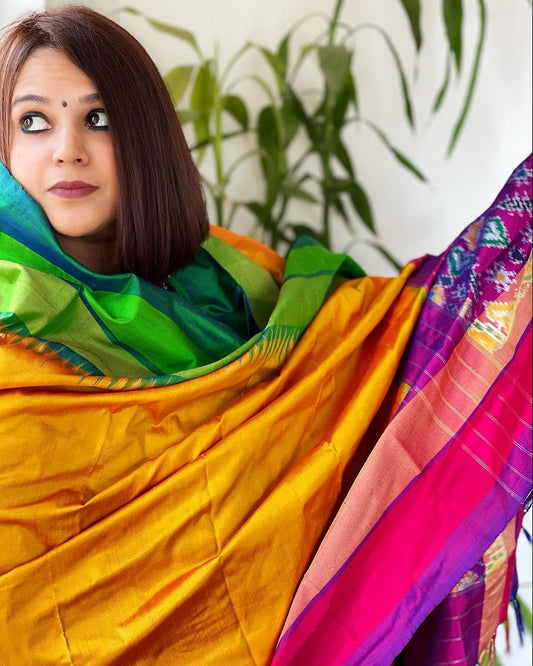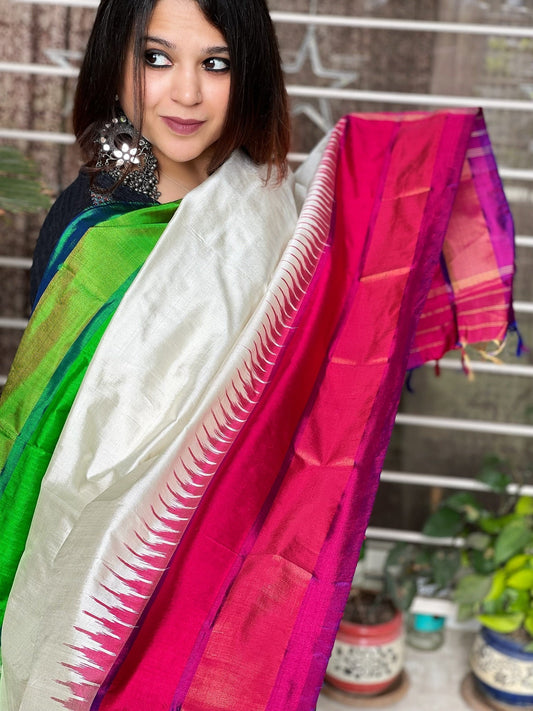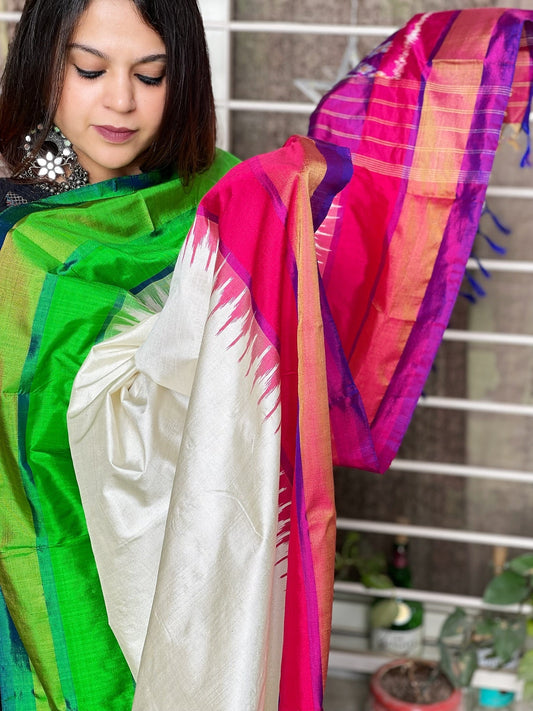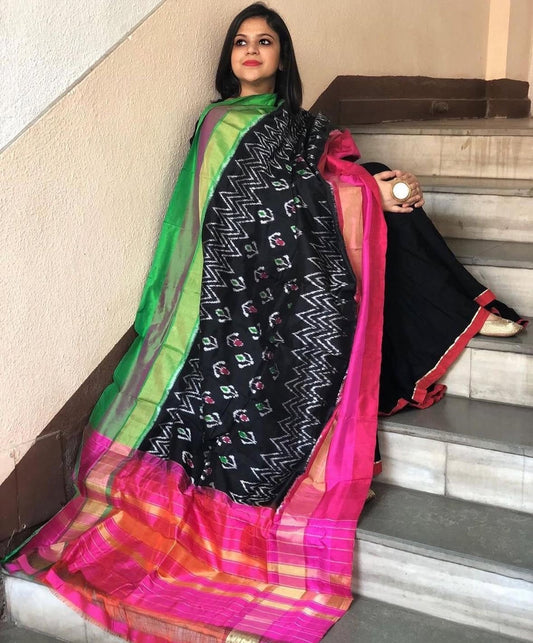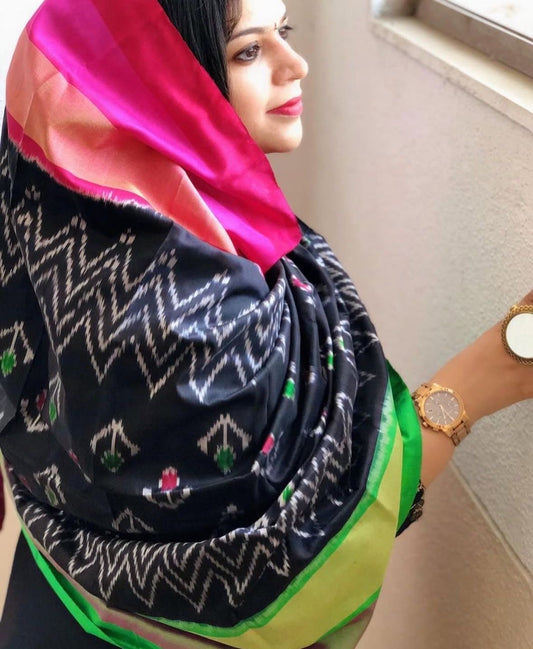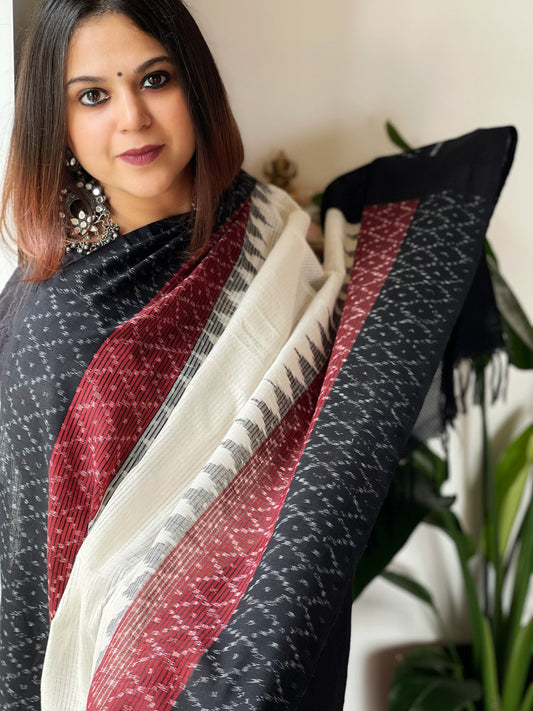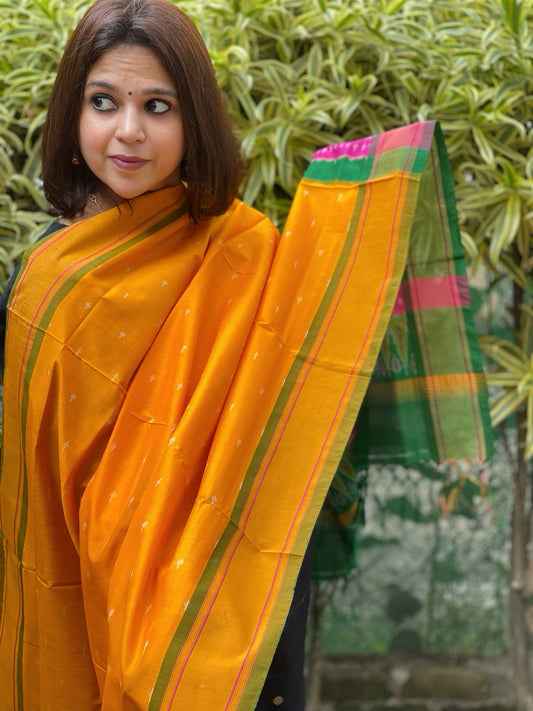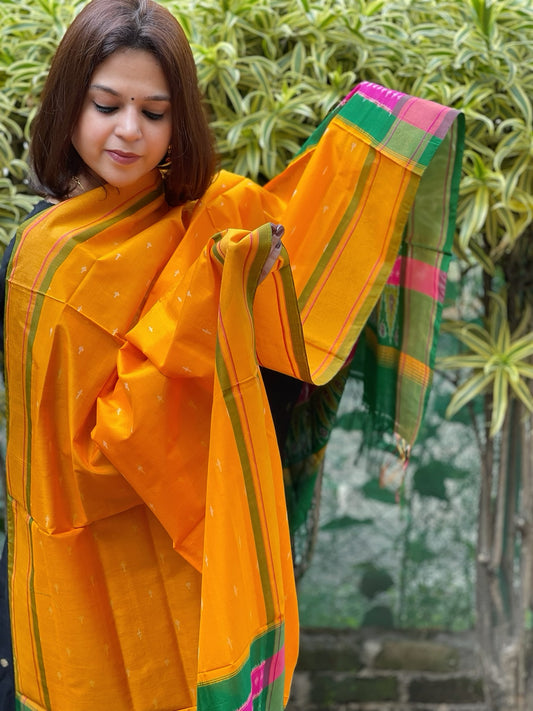Handwoven dupattas are more than just pieces of fabric; they are a testament to the rich heritage and craftsmanship of India. Each piece embodies the unique skills and tradition of the artisans who create them. However, with the rising popularity of these exquisite goods, it's becoming harder to distinguish the authentic ones from the imitations. Knowing the characteristics of genuine handwoven dupattas can help you make informed choices, ensuring you get the real deal.
When shopping for handwoven dupattas, you may have a lot of questions. Does the texture feel right? Are the patterns correctly aligned? What does the smell indicate? Understanding these factors can make a huge difference. By paying attention to certain details, you can spot an authentic piece and appreciate the artistry involved.
In this guide, we'll explore the key features of genuine handwoven dupattas. We'll also discuss what to look for when shopping and common mistakes people make. Caring for your handwoven dupatta is crucial to maintain its beauty and longevity, so we'll offer practical tips on that too. Let's dive in and discover the fascinating world of handwoven dupattas.
Characteristics of Authentic Handwoven Dupattas
Authentic handwoven dupattas have distinct features that set them apart from machine-made ones. First, the texture of the fabric is unique. When you touch a genuine handwoven dupatta, you'll notice it's softer and has a more luxurious feel compared to its machine-made counterparts. This is due to the natural fibres and traditional weaving techniques used by skilled artisans.
Another key characteristic is the pattern. Handwoven dupattas often have intricate patterns that are either embroidered or woven directly into the fabric. These designs are usually more detailed and precise, reflecting the high level of craftsmanship. Additionally, the patterns may be slightly irregular, showcasing the human touch involved in crafting each piece.
Moreover, authentic handwoven dupattas often come in vibrant colours made from natural dyes. These dyes not only offer rich hues but also ensure that the colours age beautifully over time. The smell of the fabric can also be a giveaway. For instance, a Kalamkari dupatta might have a mild natural fragrance due to the organic dyes and herbs used in its making, adding to its authenticity.
Key Signs to Look for When Shopping
When shopping for an authentic handwoven dupatta, there are several signs to keep in mind to ensure you're getting the real thing. Here are some key pointers:
- Check the Tag: Look for labels or tags indicating that the dupatta is handwoven or handloom. These tags often provide information about the artisans, the materials used, and the weaving process.
- Examine the Weave: Authentic handwoven dupattas have a distinct weave pattern. Turn the fabric over and inspect the back for irregularities. Handwoven fabrics often have slight imperfections that add to their uniqueness.
- Feel the Fabric: Touch the dupatta to feel its texture. It should be soft and luxurious, unlike the stiff texture of machine-made fabrics. The weight of the fabric can also be an indicator; handwoven dupattas tend to be lighter and more breathable.
- Look for Natural Dyes: Authentic handwoven dupattas usually use natural dyes. These colours are often more vibrant and might show slight variations, which is a sign of the natural dyeing process.
- Smell the Fabric: This may sound unusual, but an authentic handwoven dupatta, especially ones like Kalamkari, might have a unique natural smell due to the organic methods used in its creation.
By keeping these signs in mind, you can confidently identify and purchase a genuine handwoven dupatta. This ensures you are investing in a piece of traditional craftsmanship and not a mass-produced imitation.
Common Mistakes and How to Avoid Them
Even seasoned shoppers can make mistakes when buying handwoven dupattas. Knowing common pitfalls can help you avoid them. One frequent mistake is assuming that all expensive dupattas are authentic. Price is not always an indicator of authenticity. Many sellers mark up prices for machine-made dupattas to make them seem genuine. Always check the details and don’t rely solely on the price tag.
Another common mistake is ignoring the source of the dupatta. Authentic handwoven dupattas usually come from specific regions known for their craftsmanship. Ask about the origin and the artisans who made it. If the seller can’t provide detailed information, that’s a red flag. Authentic pieces often have a story or a certification to back them up.
Lastly, buying dupattas without examining them closely can lead to disappointment. When shopping in person, take the time to inspect the fabric, the weave, and the patterns. Online shopping can be tricky, so make sure to read reviews and look for detailed descriptions and images.
Tips for Caring for Your Handwoven Dupatta
Taking good care of your handwoven dupatta can extend its lifespan and keep it looking beautiful. Here are some simple tips for proper care:
- Hand Wash Only: Always hand wash your dupatta using mild detergent. Machine washing can be too harsh, causing the fabric to shrink or lose its texture.
- Use Cold Water: Cold water helps preserve the colours and the delicate fibres of the fabric. Hot water can cause the dyes to fade or bleed.
- Dry in Shade: Direct sunlight can weaken the fabric and cause the colours to fade. Dry your dupatta in the shade to keep it looking vibrant.
- Iron with Care: When ironing your handwoven dupatta, use a low heat setting. Place a thin cloth between the iron and dupatta to avoid direct contact and prevent heat damage.
- Store Properly: Store your dupatta in a cool, dry place. Avoid plastic bags as they can trap moisture and lead to mildew. Instead, use a cloth bag or wrap it in a soft cotton cloth.
- Avoid Sprays: Perfumes and sprays can damage the fabric and affect the natural dyes. Apply fragrance before putting on your dupatta to avoid direct contact.
Following these tips will help you maintain the elegance and beauty of your handwoven dupatta for years to come.
Conclusion
Understanding the beauty and uniqueness of handwoven dupattas enriches our appreciation for these exquisite pieces. By recognising the characteristics and knowing what to look for when shopping, we can make informed choices. Avoiding common mistakes ensures that our purchases are authentic and valuable. Proper care will help us treasure these pieces for a long time.
At Masakalee, we celebrate the artistry and tradition behind each piece. Explore our collection to find authentic handmade dupattas that add elegance and authenticity to your wardrobe. Contact Masakalee today and embrace the timeless beauty of handmade crafts.


